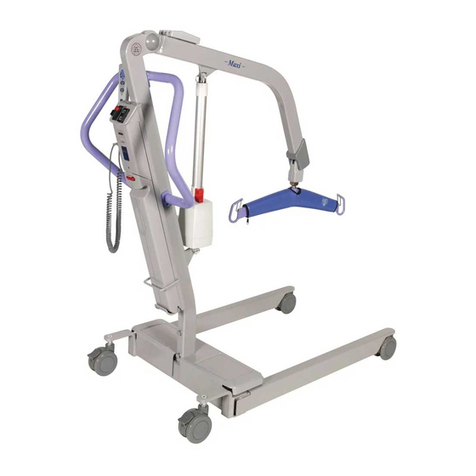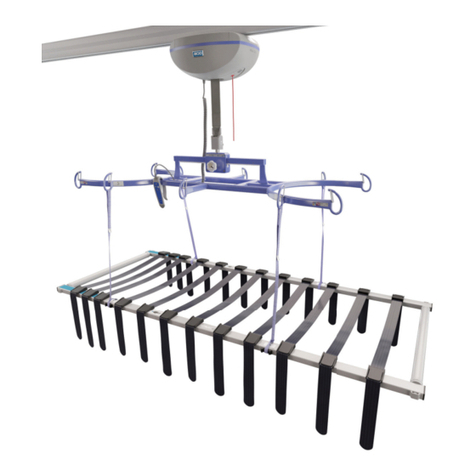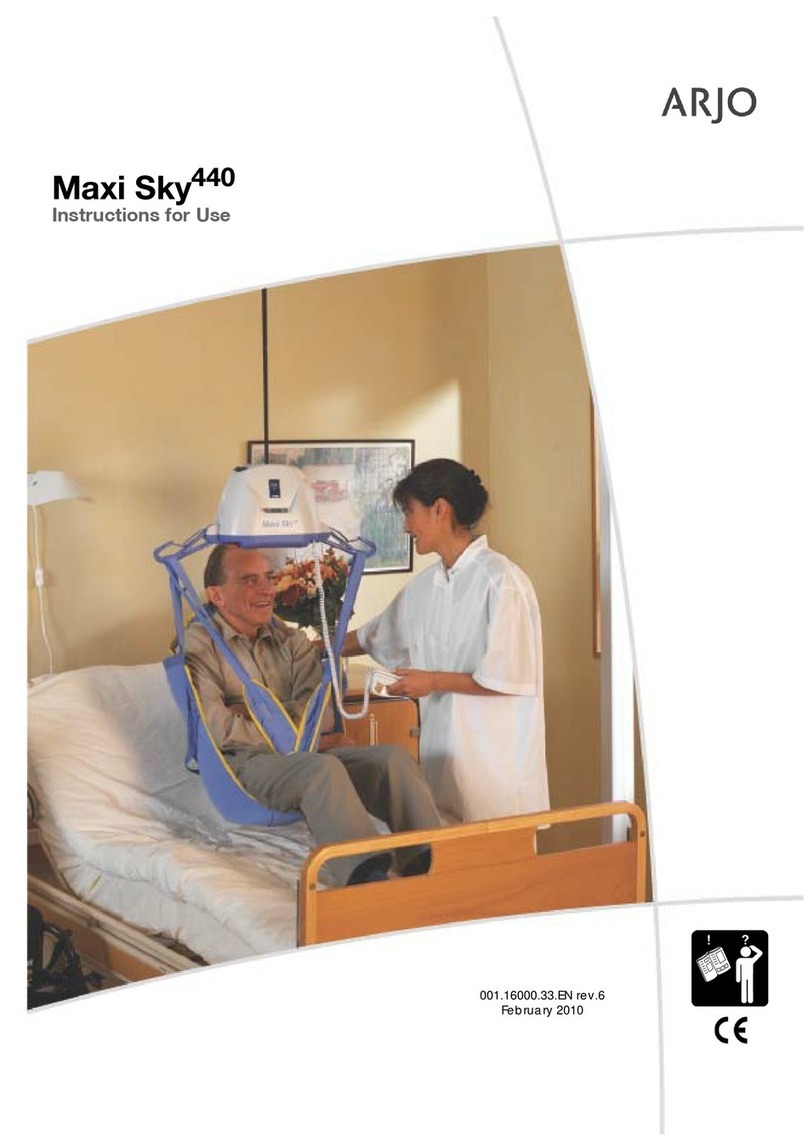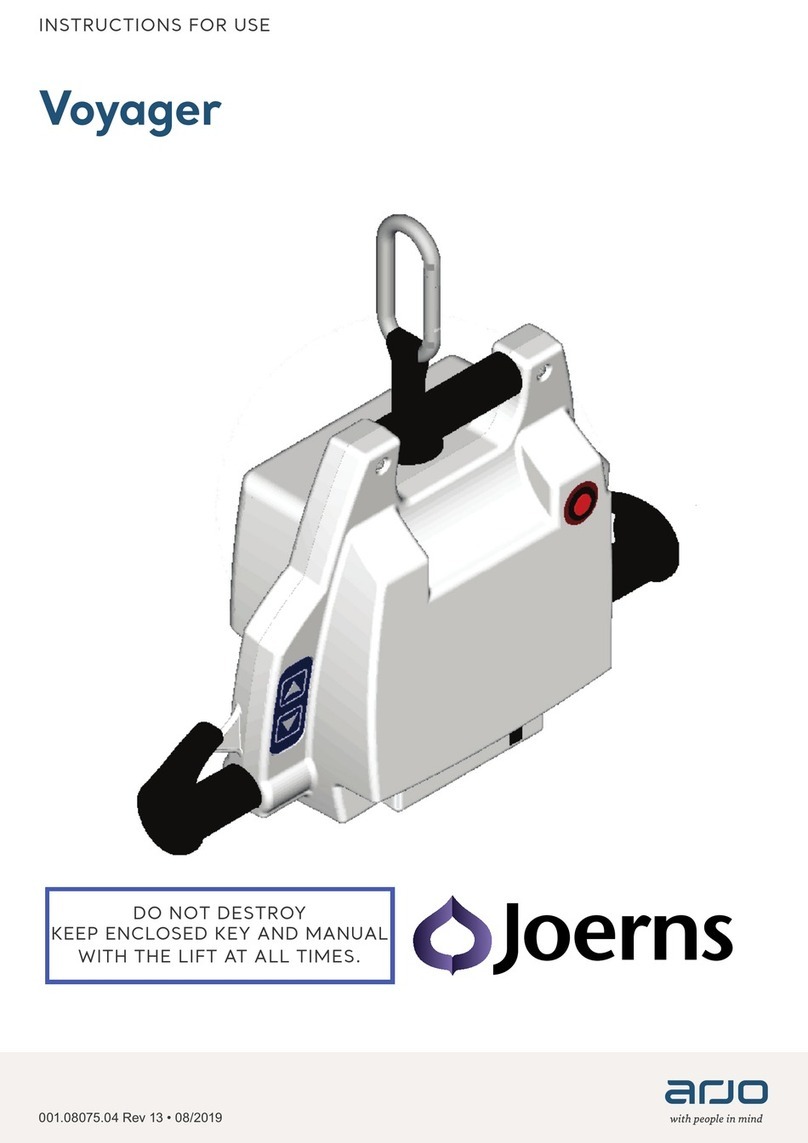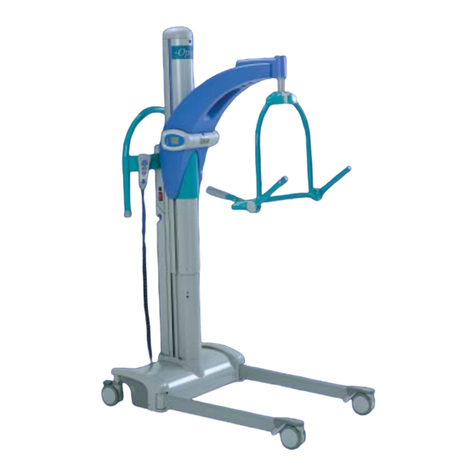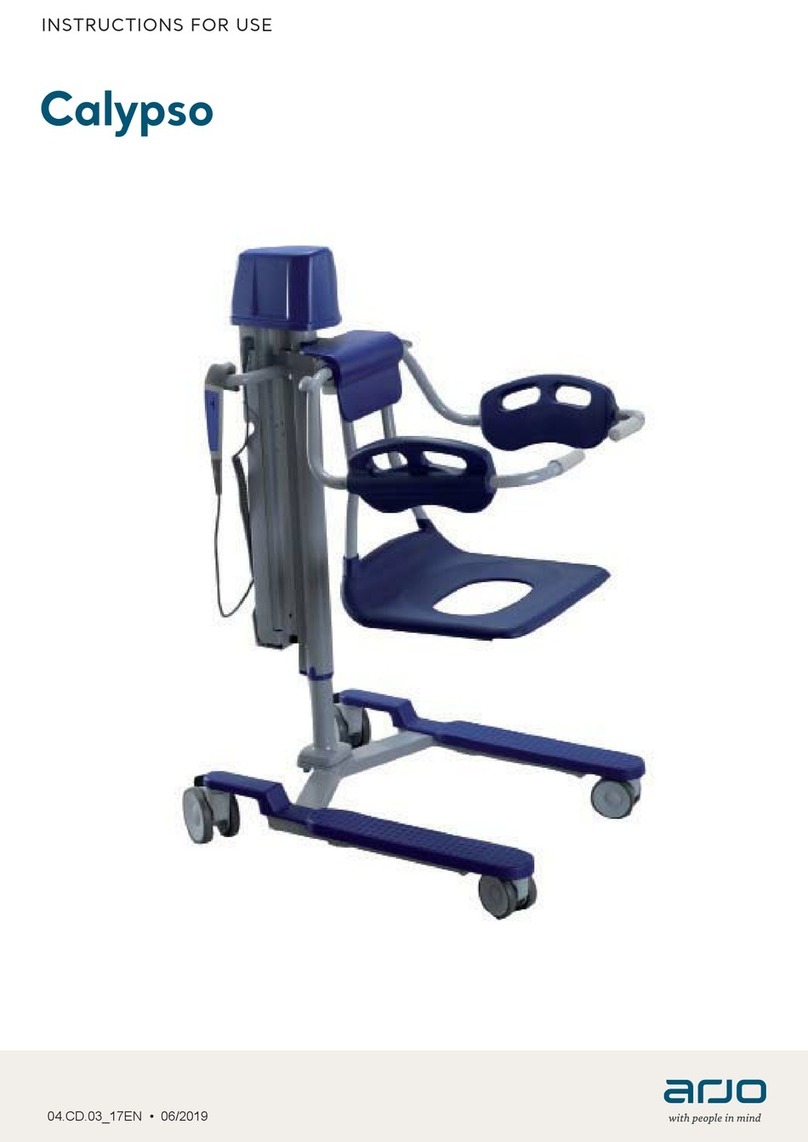
3
Note: On delivery of your hoist, check that the
usage indicator seal fixed across the emergency
lowering switch (see Fig. 1) is intact. If it is
broken, contact Arjo Ltd or their appointed
distributor, before using the hoist.
Before using your Sara 2000, familiarise
yourself with the various parts as illustrated in
figure 1, and thoroughly read and understand
these Operating Instructions.
The Sara 2000 is manufactured to a very high standard,
and primarily designed to assist patients when standing
and toileting, and for use as a short distance patient
transfer aid.
The Sara 2000 is designed for quick easy
transfers from one sitting position to another,
and to elevate a patient for toiletting,
repositioning, changing of incontinence pads,
wound dressings, standing practice etc. It is not
intended for long periods of suspension or
transportation.
This product has been designed and manufactured to
provide you with many years of trouble free use,
however, this product does contain components that
with regular use are subject to wear.
SOME OF THESE PARTS ARE
SAFETY CRITICAL TO THE OPERATION
OF THE HOIST AND WILL NEED
EXAMINING AND SERVICING ON A
REGULAR BASIS AND MUST BE
REPLACED WHEN NECESSARY. See also
“Care of your Sara 2000” section.
All references to the patient in these instructions
refer to the person being lifted, and references to the
attendant refer to the person who operates the hoist.
References to left and right of the hoist in these
instructions are as viewed from the rear of the
Sara 2000.
Use only Arjo slings that have been specifically
designed for the Sara 2000.
Two types of sling can be used with the Sara 2000.
•Standing Sling - a single loop sling, used for
supporting patients at the toilet, and to aid in
the standing process. This is a one size sling,
with variable adjustment using the different
attachment clips.
•Transfer Sling - a single loop sling with buttock
and leg support, used for easy and comfortable
transporting of patients over short distances.
The sling has variable adjustment using the
different attachment clips and leg strap loops,
(these being colour coded to relate them to the
size of patient to be lifted).
Commode Seat (accessory) - for toileting patients at
the chair side, or for patients who cannot be
transported. The assembly comprises an easy to fit
rigid commode seat, with removable commode pan.
It is available from Arjo as an accessory.
Do not overload the Sara 2000 with a weight in
excess of the approved lifting capacity of 180kg
(400lbs).
The commode and seat (accessory) has a
maximum weight limit of 160kg (350lbs) which
must not be exceeded, so allowance must be
made if using this facility.
The Sara 2000 may be used on gentle slopes
with caution.
Care should be taken when lifting detachable
components e.g. toilet seat, so as not to cause
personal injury.
Do not attempt to manually lift the complete
hoist.
A clinical assessment should be carried out by
a qualified nurse or therapist before lifting
patients who are non weight bearing. This
also applies to patients who have limited
shoulder movement or cannot hold on with
one or both hands.
Patients who have curvature of the spine, or
who are subject to muscle spasms may not be
suitable, and should be carefully assessed
before proceeding with the lift.
Although manufactured to a high standard
the Sara 2000 and accessories should not be
left for extended periods in humid or wet
areas.
Do not under any circumstances spray the
Sara 2000 or accessories (excluding slings)
with water e.g. under the shower.
Some information contained in these instructions may
become outdated, due to improvements made to this
product in the future. If you have any questions
regarding these instructions or your hoist, please
contact Arjo or their approved distributor.
Arjo’s policy is one of continuous development, and
therefore reserve the right to change specifications
without notice.
BIntroduction












